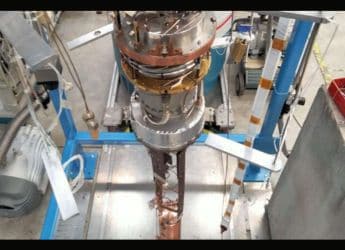- Home
- Science
- Science News
- Researchers Propose New Propulsion System to Reduce Earth to Mars Travel Time From 500 to Just 45 Days
Researchers Propose New Propulsion System to Reduce Earth to Mars Travel Time From 500 to Just 45 Days
Scientists are assessing the potential of a laser-thermal propulsion system, where laser beams would be used to heat the hydrogen fuel.

Photo Credit: NASA/ DSCVR EPIC
It would take up to nine months to reach Mars from Earth using the current technology
The race for space exploration is unfolding at an unprecedented speed. Private companies have forayed into this sector with commercial ventures, and the US and China have set their eyes on landing humans on Mars by the next decade. While this ambition is laudable, it presents significant technological and logistical challenges. For instance, a mission to the Red Planet can only be launched once every 26 months, when Earth and Mars are at their closest point. Even then, it would take up to nine months to reach Mars from Earth using the current technology. This then calls for radical ideas to transform space travel.
A group of researchers from McGill University, Montreal, Canada, has come up with a novel solution. They say if the spacecraft uses the propulsion system they have suggested, the Earth-Mars travel time could be reduced to just 45 days, which would incredibly speed up Mars exploration. The scientists are assessing the potential of a laser-thermal propulsion system, where laser beams would be used to heat the hydrogen fuel.
The idea of using directed energy is not new. In recent years, directed-energy propulsion has been the subject of considerable research. The system uses laser beams to propel a spacecraft into deep space. The more powerful the laser, the faster the spacecraft can be accelerated. The system also proposes to return the rest of the vehicle to Earth. The researchers propose to fire large lasers from Earth to deliver power to photovoltaic arrays on the spacecraft. This would generate electricity and in turn thrust.
The researchers have submitted their study, titled "Design of a rapid transit to Mars mission using laser-thermal propulsion'', to the journal Astronomy & Astronomy. It is available in a preprint on arXiv. The research was led by Emmanuel Duplay, a McGill graduate and MSc Aerospace Engineering student at TU Delft.
If successful, this idea solves two main challenges related to logistics and health for Mars travel. Prolonged exposure to radiation and microgravity during deep-space transits presents hazards to health.
Catch the latest from the Consumer Electronics Show on Gadgets 360, at our CES 2026 hub.
Related Stories
- Samsung Galaxy Unpacked 2025
- ChatGPT
- Redmi Note 14 Pro+
- iPhone 16
- Apple Vision Pro
- Oneplus 12
- OnePlus Nord CE 3 Lite 5G
- iPhone 13
- Xiaomi 14 Pro
- Oppo Find N3
- Tecno Spark Go (2023)
- Realme V30
- Best Phones Under 25000
- Samsung Galaxy S24 Series
- Cryptocurrency
- iQoo 12
- Samsung Galaxy S24 Ultra
- Giottus
- Samsung Galaxy Z Flip 5
- Apple 'Scary Fast'
- Housefull 5
- GoPro Hero 12 Black Review
- Invincible Season 2
- JioGlass
- HD Ready TV
- Laptop Under 50000
- Smartwatch Under 10000
- Latest Mobile Phones
- Compare Phones
- OPPO Reno 15 Pro Max
- Honor Win RT
- Honor Win
- Xiaomi 17 Ultra Leica Edition
- Xiaomi 17 Ultra
- Huawei Nova 15
- Huawei Nova 15 Pro
- Huawei Nova 15 Ultra
- Asus ProArt P16
- MacBook Pro 14-inch (M5, 2025)
- OPPO Pad Air 5
- Huawei MatePad 11.5 (2026)
- Xiaomi Watch 5
- Huawei Watch 10th Anniversary Edition
- Acerpure Nitro Z Series 100-inch QLED TV
- Samsung 43 Inch LED Ultra HD (4K) Smart TV (UA43UE81AFULXL)
- Asus ROG Ally
- Nintendo Switch Lite
- Haier 1.6 Ton 5 Star Inverter Split AC (HSU19G-MZAID5BN-INV)
- Haier 1.6 Ton 5 Star Inverter Split AC (HSU19G-MZAIM5BN-INV)

















